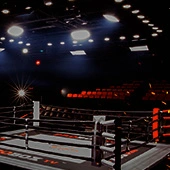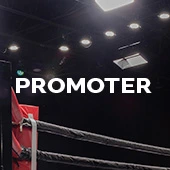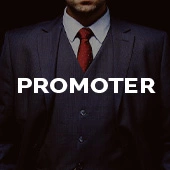On October 17, 2018, it was announced that DAZN, Canelo Alvarez, and Golden Boy (Alvarez's promoter) had entered into an agreement to stream Canelo's next eleven fights on DAZN platforms throughout the world with DAZN paying a minimum of $365 million for the honor. Thereafter, Bernard Hopkins observed, "Canelo has the money on paper. But he doesn't have it in the bank yet."
Boxing has made Canelo a wealthy man, and deservedly so. But whether he'll receive the full $365 million called for by his contract is an open issue, as will be discussed later in this article.
Boxing, like the rest of the world, is in chaos. There have been no major fights for two months and no boxing cards are scheduled at present in the United States. This article isn't about the propriety of holding fights. It's about what the state of boxing will be when it returns.
Boxing lends itself to the resumption of competition more easily than most sports. It's event driven as opposed to relying on a full schedule. Fewer people are involved in putting each event together than are required for other sports. When and where it returns will depend to a great degree on what the governors in various states allow. There will be boxing in some states. Florida has made that clear. Texas and other jurisdictions are sure to follow.
For the foreseeable future, fights cards will be held without spectators in attendance. As promoter Frank Warren noted, "Fans will have to settle for the armchair over the ringside seat. We are going to be a television product for a period of time, and we have got to make the best of it. No sport wants to be operating behind closed doors. But that is how it is going to be, so we have to face up to the reality."
Without spectators on site, small promoters who rely on the live gate to make ends meet won't be able to promote.
Other revenue streams (such as sponsorships) will also be diminished. And there will be significant additional costs for COVID-19 testing and other medical precautions. These medical expenses - incurred in conjunction with fighters, their camps, arena employees, TV production personnel, and others involved with each promotion - will be born by the promoter.
The course of boxing in the United States over the next year will be determined primarily by four alliances: (1) ESPN and Top Rank; (2) FOX and Premier Boxing Champions; (3) Showtime and Premier Boxing Champions; and (4) DAZN in conjunction with Matchroom and Golden Boy.
The first few fights back will get a ratings bump on television. But it's unclear what the budget for these fights will be. Each network and promoter has a contract that lays out guidelines for license fees. But any party to these contracts can seek relief claiming "force majeure" (a legal concept that frees the party from performing certain contractual obligations in the event that unforeseeable circumstances beyond that party's control interfere with performance). Should negotiations with regard to force majeure occur, the networks will have the upper hand. The promoters need the networks more than the networks need the promoters.
If Major League Baseball falls off the map and football (college and pro) find it impossible to proceed this autumn, it will increase the demand for boxing and network budgets for the sweet science might increase. On the other hand, even if boxing gets good ratings as one of the few games in town, it won't necessarily attract advertisers. When the economy was booming, boxing wasn't attracting advertisers the way the powers that be hoped it would. With the economy in shambles, overall spending for advertising is likely to decline.
Top Rank hopes to return in early June with fight cards in Las Vegas televised on ESPN and ESPN+. On May 11, Bob Arum told SiriusXM radio, "We plan to launch in a safe, secure way. We're making arrangements with a hotel. We can get everybody tested, put them in a bubble, and get these fights on. Unfortunately, because a lot of it requires so much extra work and care and testing, we’re going to limit our fight shows to four fights a card. That’s the bad side. The good side is, we hope, we’re arranging with ESPN to do two or three events every week."
But a lot has to happen before Top Rank can move forward with fights in Nevada. Medical protocols have to be put in place. The arrangements have to be approved by the Nevada State Athletic Commission. There has to be a deal for a site, hotel rooms, meals, and the like. Also, Top Rank and ESPN have to agree on financial terms.
The loss of the live gate will hurt Top Rank more than its primary competitors in the United States because Top Rank has been more successful than its competitors in selling tickets. Industry sources say that Top Rank has told ESPN that it needs more money, not less, from the network to make up for the loss of the live gate plus increased medical costs and other expenses associated with the coronavirus. ESPN, which has its own financial issues, has been largely unsympathetic to that point of view.
When asked by Boxing Scene on May 11 whether Top Rank's existing promoter-network contract with ESPN will be renegotiated or reinterpreted, Top Rank president Todd duBoef said, "Everything is up in the air right now. We're all trying to figure this out. I'd rather not discuss the ecoomics of it."
When all is said and done, Top Rank will have to deliver shows to ESPN. And it will have to deliver fights that don't require a live gate to be financially viable.
Premier Boxing Champions has alliances with FOX and Showtime. Al Haymon doesn't want PBC to be the first boxing promoter to come back in the United States. He's biding his time and wating to see how things shake out.
Questions have been raised at FOX regarding whether the financial arrangements for Wilder-Fury 2 were in the network's best interests. And PBC's other offerings on FOX have moved the needle less than expected. That might lead to reinvigorating PBC's ties with Showtime.
PBC has an exclusive with regard to Showtime Championship Boxing dates. ShoBox is an open shop. Showtime Sports president Stephen Espinoza was less than enthralled with the content that his network received from PBC in 2019. He and Al Haymon could get back on the same page in 2020.
Showtime has a hard commitment for boxing from senior management for the next two years. The network doesn't rely on advertising revenue. It doesn't televise non-combat sports. It has a long tradition in boxing, knows the sport, and has the capacity to put together successful pay-per-view promotions. The current financial crisis could be an opportunity for Showtime to reassert itself on the boxing scene.
On May 4, Espinoza revealed, “I don’t think we are going to be one of the first ones to come back. There is a feeling that the audience is desperate for sports, which is probably true. But we’re not going to take advantage of that and throw a bunch of stuff out there to say we’re back. We need to take our time and come back with the right fights at the right time to try and reduce the risk as much as possible while doing premium-level fights that are worthy of the audience."
Eight days later, Espinoza cofirmed, "We’re targeting sometime in July to return. And obviously, we’re spending a tremendous amount of time right now trying to make the environment as safe as possible. That involves working with PBC as they set up protocols for the fighters and promoters. And it’s also working with our parent company as we set up protocols for our employees and contractors."
Then there's DAZN.
On May 20, 2015, Richard Deitsch of Sports Illustrated moderated a forum in which he discussed the future of broadcast sports with NBC Sports Group chairman Mark Lazarus, CBS Sports president Sean McManus, Fox Sports president Eric Shank, and John Skipper (then president of ESPN). During the Q&A portion of the program, Richard Sandomir of the New York Times asked, “For those of you who do and those of you who don’t associate with Al Haymon on the PBC, how do you think that strategy is going to play out in terms of building interest for boxing?”
Skipper’s answer was direct and to the point: “Last time I checked my XY-axis quadrant, it’s not in the right quadrant.“
Skipper is now executive chairman of DAZN Group. And the last time anyone checked their XY-axis quadrant for DAZN USA, it wasn't in the right quadrant. DAZN gave boxing fans in the United States better fights last year than any other network. But the content came at a high price for DAZN.
DAZN's subscriptions in the United States, which were already at a disappointing level, have dropped precipitously as a consequence of the economic shutdown. In today's environment, it will be hard to get these subscribers back. Last year, Bloomberg.com reported that, worldwide, DAZN lost $627 million in 2018 (the most recent year for which financials are publicly available). The value of DAZN USA keeps going down.
DAZN has been funded largely by Len Blavatnik, a Ukranian-born billionaire who has both UK and US citizenship. Last year, according to the Bloomberg Billionaires Index, Blavatnik was worth approximately $25 billion. That number might have dropped significantly in recent months since much of Blavatnik's fortune comes from oil and petrochemicals and he has invested heavily in entertainment ventures.
A source at DAZN says that Blavatnik has instructed DAZN USA to be "more cash conscious" moving forward.
On May 20, Blavatnik will host a video conference call - a regularly held event for DAZN's top brass from around the world. On this call, John Skipper is expected to present a plan for DAZN going forward in the United States.
DAZN USA struggled last year in a booming economy. It will be more difficult for it to succeed in a depression. Quite possibly, DAZN will ask that various contracts be renegotiated. This could run the gamut from its relationship with Matchroom to contracts with individual fighters.
The Saudi Arabian government might also become a factor in keeping DAZN USA afloat. Saudi Arabia hosted the rematch between Anthony Joshua and Andy Ruiz last year. The Saudi government now seems to be moving toward investing in entertainment businesses rather than events.
For example, Blavatnik owns Warner Music Group. According to the Hollywood Reporter, the Saudi Arabian Public Investment Fund offered $750 million for a small stake in WMG in February of this year. Blavatnik turned the offer down because he was readying for a public offering of WMG stock that he thought would be more profitable for him. But on March 2, the public offering was put on hold because of an unfavorable market reaction. Then, on April 27, the Saudi Arabian Public Investment Fund made an offer to buy Warner Music Group in its entirety.
The most intriguing issue regarding DAZN insofar as boxing fans are concerned is its relationship with Canelo Alvarez.
DAZN hopes to stream a third fight between Canelo and Gennady Golovkin this autumn. But Golovkin has indicated that he'd like an interim bout first. And the likely absence of a live gate would make Canelo-Golovkin III less economically viable than before given the financial demands of each fighter.
This leads to a larger question: What would happen to DAZN's contractual obligation to Canelo (who still has eight fights for a minimum of $280 million left on his contract with the network) if DAZN USA were to file for bankruptcy?
A reliable industry source with inside knowledge of the situation says that two contracts are involved. First, DAZN USA has a contract with Golden Boy that calls for Golden Boy to provide Canelo's services to DAZN USA. Canelo ratified this contract by signing the deed (a British legal term). Golden Boy also has a separate contract with Canelo that, among other things, spells out the number of fights and his minimum purse for each fight.
The source further states that DAZN USA's contract with Golden Boy has a provision in it that specifically deals with what would happen were DAZN USA to file for bankrupcy (a clause that's common in contracts). Pursuant to this clause, Golden Boy - and by extension, Canelo - is just another creditor whose claims wouldn't be satisfied until after Len Blavatnik, the World Trade Center (DAZN USA's landlord), and other secured creditors are paid. Under these circumstances, Canelo would be free to sell his services elsewhere. But in today's market, it's unlikely that he would command a minimum guarantee of $35 million per fight.
Meanwhile, this is the silly season in boxing. Mike Tyson and Evander Holyfield are grabbing headlines with talk about a fight that would be akin to the NBA coming back with Hakeem Olajuwan vs. David Robinson. Paulie Malignaggi has revived the notion of his fighting Conor McGregor. And we can assume that, when fights do resume, most losing fighters will say, "I'm not making excuses, but I couldn't train the way I wanted to because of the coronavirus." Naturally, winning fighters will respond, "Hey; I couldn't train the way I wanted to either."
That said; fight fans can expect to see significant systemic changes when boxing returns.
First, purses will drop.
With DAZN spending money like a proverbial drunken sailor on leave, the balance of power with regard to fighter purses shifted toward fighters in recent years. By way of example; Demetrius Andrade is a very good fighter. But he has never beaten a top echelon fighter. Nor has he been a magnet for ticket sales, TV ratings, or subscription buys. A source close to Andrade says that his purse for fighting Luke Keeler on DAZN on January 30, 2020, was $2.4 million. And just prior to that bout, Andrade signed a contract extension that calls for him to be paid a minimum of $11 million for four fights as long as he keeps winning.
DAZN's checkbook drove purses higher across the board as other networks were forced to compete with its offers. But because of COVID-19 and DAZN's current financial problems, high purses for fighters who don't generate equivalent revenue to the benefit of networks and promoters are about to shrink. Even fighters with guaranteed purses and multi-bout contracts could see their income drop. Force majeure doesn't end just because there are fights. It can - and will - be invoked in some instances by promoters in an attempt to get out from under excessive contractual minimum purses.
Talking with Chris Mannix earlier this month, Bob Arum declared, "Some fighters have different views, and after we talk with them, if those views make it impossible to use ‘em, next man up. We have like ninety fighters that fight for us. There are a lot of fighters that fight under Lou DiBella’s promotion or Kathy Duva’s. Fighters, I envisage, will be fighting for a place on these cards. If a fighter said, ‘No, I don’t wanna fight without an audience; you have to pay me more or I just don’t fight,’ that’s okay. I respect that. Next man up. Nobody is indispensable in this environment.”
Top Rank has already reached out to DiBella Entertainment to discuss the possibility of using Mikkel Lespierre and Yenifel Vicente as opponents in upcoming fights.
Adjustments will be made to what everyone earns. It's hard to imagine people in boxing at any level - promoters, fighters, TV networks - making as much money in 2020 as they did in 2019.
Also, despite the rhetoric, the quality of fights that boxing fans see in the months ahead is likely to be less attractive than before the layoff. Big fights will be difficult, if not impossible, to make because of the absence of a live gate. It would be nice if fans saw the best match-ups possible at lower levels, but the odds are that we won't. We'll see stay-busy fights and showcase fights unless fighters are willing to go in tough for less. Networks and promoters might take issue with this prediction. The quality of the fights that viewers see will speak for itself.
With live gates removed from the equation, boxing in the foreseeable future is likely to have more pay-per-view fights than before. Pay-per-view is designed to effectuate a big score now, not build the sport.
The COVID-19 shutdown represents an opportunity for boxing to reset. The absence of other sports gives the sweet science a window to shine and expand its fan base. Part of the sales pitch for putting on fights sooner rather than later is that, because there are virtually no other sports at the moment, casual sports fans will be drawn to boxing. But if the fights that viewers see are disappointing, casual sports fans are likely to distance themselves even further from boxing, as happened after Mayweather-Pacquiao.
At present, everything is speculative. Safety protocols that look good on paper can fail in their implementation. The number of new COVID-19 cases in the United States will rise in some places as the economy reopens. Regardless of plans that might be made for big fights like Canelo-Golovkin III and Fury-Wilder III, a fight that promises a live gate can be shut down on a moment's notice. Even if spectators are allowed at fights, ticket sales will suffer. It will be a long time before fans feel comfortable in a crowded arena. It's unikely that there will be boxing with a significant number of spectators onsite until an effective vaccine is developed AND people are confident about it. That means 2021 at the earliest.
What will happen next? Your guess is as good as mine.
Thomas Hauser's email address is thomashauserwriter@gmail.com. His most recent book – A Dangerous Journey: Another Year Inside Boxing – was published by the University of Arkansas Press. In 2004, the Boxing Writers Association of America honored Hauser with the Nat Fleischer Award for career excellence in boxing journalism. He will be inducted into the International Boxing Hall of Fame with the Class of 2020.





